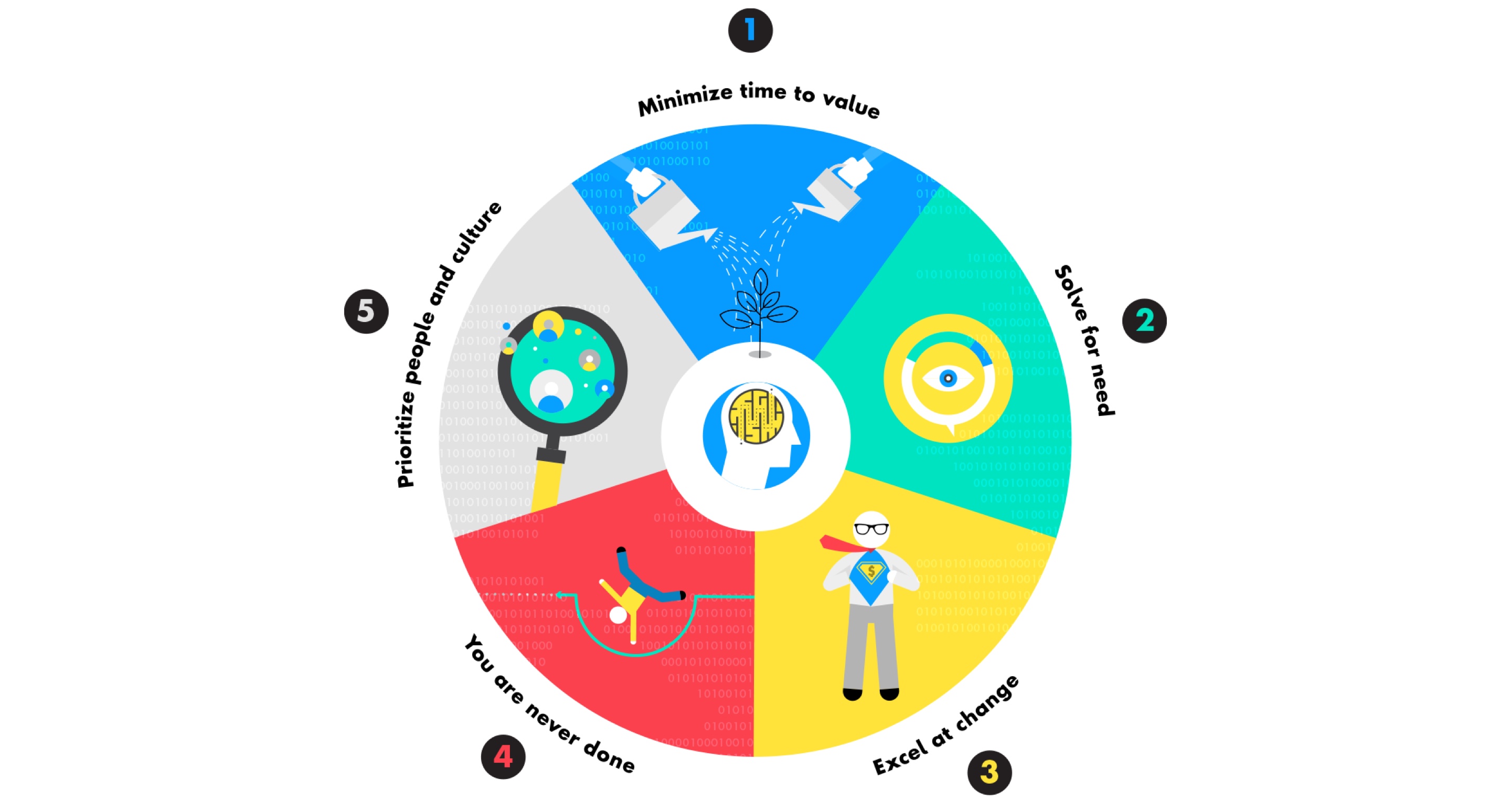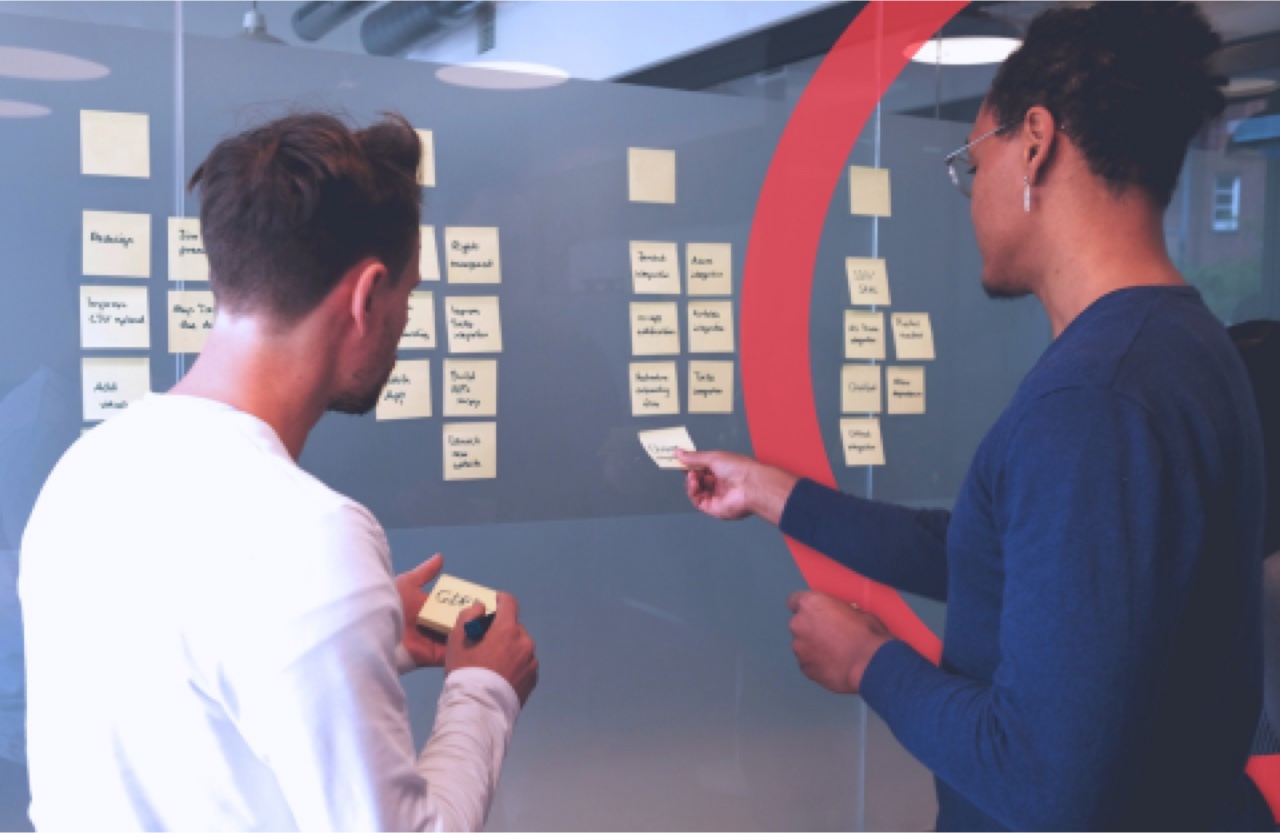What issue can we solve for you?
Type in your prompt above or try one of these suggestions
Suggested Prompt



Public Sector
How to Adopt a Product Mindset to Drive Public Sector Services
It should be no surprise that people expect accessibility, equity, convenience and personalization when it comes to public sector digital services, as they already experience these things when interacting with most commercial companies in the private sector.
Governments that provide public services must absolutely follow suit to meet citizens’ needs and gain their trust. Studies indicate that citizens' trust in government increases when they have access to digital services. Every interaction between governments and the public is an opportunity for the public sector to deliver the level of service that the public expects and deserves.
Billions have been spent on public sector systems modernization in the last decade. But unlike the private sector, the public sector is missing one of the most important keys to success: adopting a product mindset when it comes to systems design and service delivery.
Having a product mindset includes the following characteristics:

Here we dig deeper to create a useful guide for government agencies to cultivate a product mindset.

Minimize time to value
Product mindset practitioners start by identifying areas of potential value to customers, colleagues and the service provider itself. We’ve all heard the phrase “low hanging fruit”, a reference to identifying an easy task with a potentially high return on investment. This is one end of the spectrum of identifying value but far from the entire picture.
Rather than working through incremental problems on a serial basis, product mindset practitioners choose to identify the entire set of issues at play in an under-optimized product or service as the first order of business. This is best done as a result of design research to understand user needs and business analysis to understand the organizational impact. These issues constitute a set of value pools from which to understand the cost drivers and, for government applications, mission effectiveness inhibitors that need attention. Some will be easy to analyze, and some much harder.
Based on an agreed set of criteria, the team then proceeds through a prioritization exercise and builds its backlog—the list of things they will work on over time to improve the product, service or process.
This process builds an objective pathway toward producing value for customers and other stakeholders at a capacity that the organization can handle. From there, agile development methods guide the team in an iterative way, building and testing ideas and solutions. Working in an agile environment allows for rapid iteration, which typically yields a quicker time to launch.

Solve for need
Most often, the soundest decisions are made based on evidence. Typically, this evidence is numbers-based data such as functional and operational data. While these are important sources to inform decision-making processes, a third type of data can help create a more holistic approach to solve for needs.
Functional data indicates if a system is performing its tasks correctly, such as whether a transaction is completed or abandoned, or a form is filled out and submitted correctly.
Operational data is derived from objective, observable and measurable processes such as sales or channel volume and cost to serve.
Experience data, on the other hand, can be a combination of hard quantitative data, such as a customer satisfaction score, and results are derived from qualitative data, such as ethnographic research, contextual inquiry, one-on-one interviews or focus groups.
For most organizations, chances are that generating enough data is not the problem, but rather how to draw the best insights and take action from a collection of these three types of data sets.
How one U.S. government department became the latest tech success story

The U.S. Department of Veterans Affairs (VA) has become one of the U.S. government’s latest tech success stories. Their new mobile app has passed 1 million downloads, with a 4.8 app store rating. How did the department achieve such wild success?
The challenge was clear. Veterans needed faster access to the VA’s most common digital services. Every year, more of va.gov’s traffic was coming from mobile, a trend that had accelerated during the COVID-19 pandemic.
In response, the VA’s tech team used experience data to build a prototype with accessibility in mind. Many blind and low-vision people experience the internet through their smartphones, which have great accessibility features. The team worked with the Blinded Veterans Association (BVA) to ensure that, from its first release, all veterans would have a great experience with the app.
After a soft launch, the team adjusted the app’s features based on feedback, utilizing a blend of functional data and experience data. With thousands of real-world veterans using the app, feedback came in fast and furious. One top-requested feature was payment notifications, while a main pain point was ease of sign-in on the app.
Veterans have used the app to send over one million messages to their healthcare teams, downloaded over 3.3 million letters and checked the status of a claim 45 million times.

Excel at change
The rate of change happening all around us all the time is mind-blowing. Social norms, technologies, government policies, how we shop and what’s trending are constantly in flux.
Government service providers are not insulated from this rate and level of change. The ability to quickly pivot to accommodate a new finding, an assumption that was wrong or a budget that gets cut is as much an art as it is a science, and it is essential for leaders who live in a product mindset world. To hone the skills to excel at change, leaders must be open and curious with a radar that picks up on changing conditions, threats and unanticipated risks.
The ability to fluidly prioritize and deprioritize keeps the focus on the outcome based on the latest information. Test and learn methods ranging from paper prototypes and feedback demos to soft launches are a way of life and keep devotion to the customer's view of value at the center.

You are never done
A product mindset goes hand-in-hand with product management practices that span the entire lifecycle of a product or service. While product management is certainly not a new idea, its application to software brings some new constructs to optimize digital change at an enterprise level.
First, there is a central owner who could either be a manager or a team depending on scope. Unlike the present norm where various functional areas such as IT, customer service and communications manage their individual pieces of citizen service, the product manager serves a general management role and therefore keeps all work under one roof. Not only does this lend continuity to the backlog development process, but it also makes it more efficient in terms of development and continuous improvement efforts due to centralized management. When customer feedback comes in, a more direct line to product management helps the team that manages service operations to quickly solve any query or complaint.
Secondly, products are by nature never finished because they are measured by outcomes rather than budget and scope. This is a vast departure from the typical way IT projects have been managed in the past. They require a service orientation and staffing that reflects ownership and responsibility for service delivery based on key functions, both operational and experience metrics.
The shift to product managers that practice a product mindset offers many exciting elements for the future of government services. It is a new career category that government human resources management should eagerly embrace in order to modernize government service experiences to be competitive with the private sector—a benchmark that is often mentioned in government circles but has yet to be fully realized from an organizational perspective.

Prioritize people and the product mindset culture
Creating a team of people who live in a culture that is understood and cherished is the holy grail when it comes to a product mindset way of working. To do so, agencies must either train or hire their leaders to act differently. Leaders must become outcome focused and provide a service orientation when it comes to customers and the employees who serve them. This can be a tall order in a tech culture where development and engineering have always reigned. We recommend keeping the notion of achieving relevance and trust front and center as change is navigated. A majority of people would want to get on board to improve citizen services in a positive way.
Not only do team members need to be good at both their individual skills and working in an interdisciplinary way, but they also need to offer openness and curiosity that will keep the workplace fresh and the development efforts constantly improving. Effective risk management is of the utmost importance for product mindset leaders. Service design and management are fraught with risk—resourcing, development, organizational, political and budgetary, to name a few.
Now’s the time for governments to embrace a product mindset
Adopting a product mindset is critical for government agencies across the public sector. While efforts have been made in tech policy and support for agile development, the U.S. government has yet to succeed in making citizen-centric programs truly transformational for users. Implementing a product mindset when it comes to systems design and service delivery can ensure that every interaction with citizens is an opportunity for the public sector to deliver the level of service that the public expects and deserves.
Related Reading
-
![]()
Article
Three Imperatives to Put Citizens at the Heart of Digitizing the Public Sector
The voice of the citizen is important and central to successful government technology programs. Here are three issues that provide the groundwork for governments to reimagine the future citizen experience.
-
![]()
Insight
Product Management: Seizing Opportunity and Value Across the Public Sector
Product management in a digital age allows federal agencies to pivot strategically and increase speed to market for new capabilities. Learn more here from the public sector industry experts at Publicis Sapient.
-
![]()
Insight
The Future of Healthcare
Over the next decade, patient-centricity and a focus on value-based care will disrupt, innovate and transform the entire healthcare industry.







